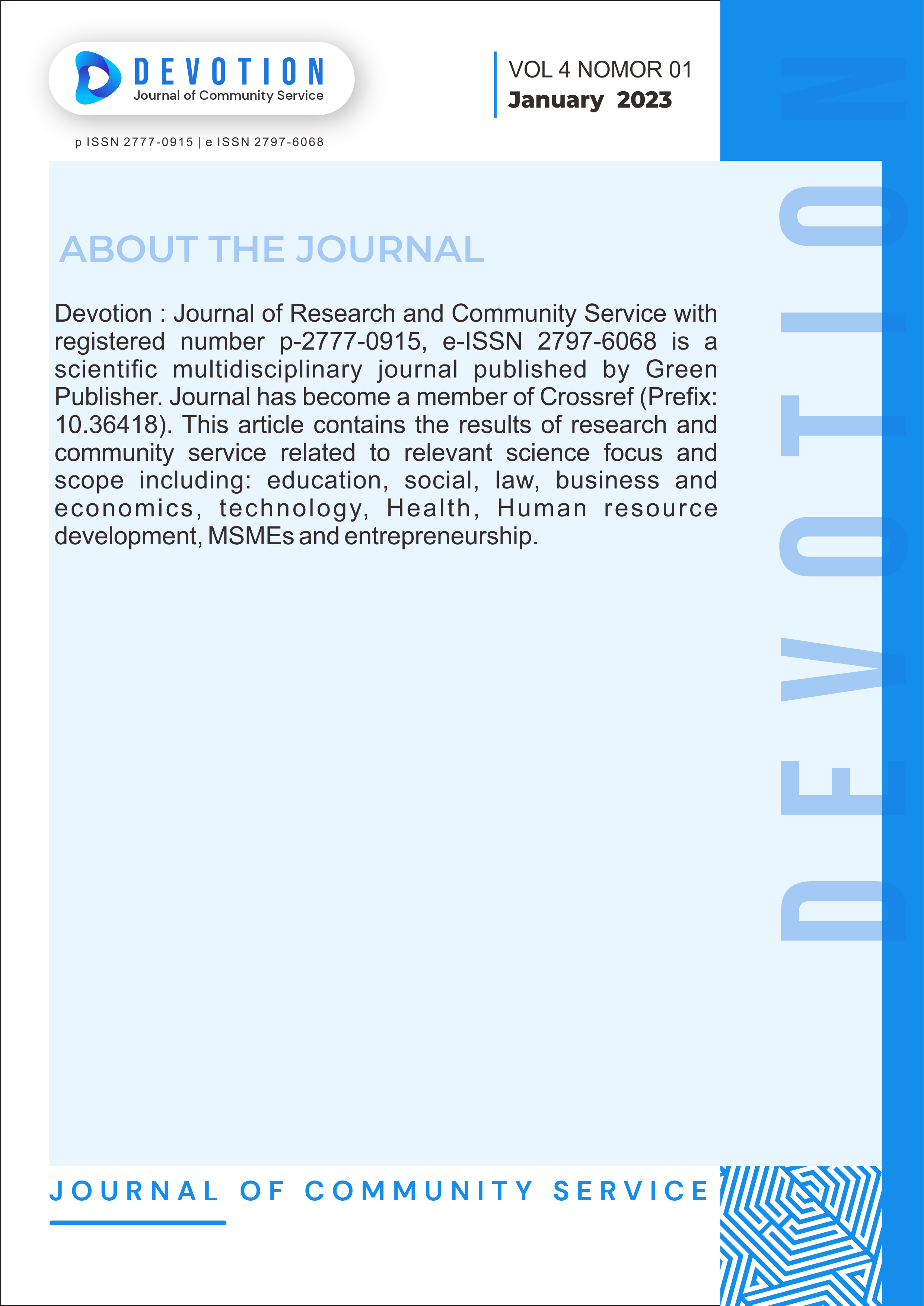Antioxidant Capacity Test, Total Phenolic, Total Alkaloid, and Toxicity of Marigold Flower (Tagetes Erecta L.)
DOI:
https://doi.org/10.36418/dev.v4i1.352Abstract
Antioxidants are a set of compounds that can fight the effects of reactive oxygen species (ROS) so as to eliminate their effects in the form of damage to macromolecules of carbohydrates, fats, proteins, and DNA chains. One source of antioxidants that are easily available and widely available is through herbal ingredients such as marigold flowers (Tagetes erecta L.). Marigold flowers are well known and used as a source of antioxidants, anti-inflammatory, antibacterial, diuretic and accelerate wound healing. This flower is often consumed as an edible flower and is also drunk in the form of tea. This study aims to look for the antioxidant capacity, total phenolic, total alkaloids, and toxicity of marigold flowers. Marigold flower extract is obtained by evaporating the results of methanol maceration from dried marigold flowers. Test antioxidant capacity with DPPH (2,2-diphenyl-1-picrilhydrazyl) using Blois method, total phenolic using Singleton and Rossi method, total alkaloid by method by Trivedi et al, and BSLT toxicity by Meyer method. The antioxidant capacity of marigold flowers is measured in IC50 as much as 74.5 μg/mL which includes active antioxidant levels. The total phenolic content of marigold flowers was obtained as much as 10,350.68 μg/mL. Total alkaloid levels were obtained as much as 13.05 μg/mL. The BSLT toxicity test in LC50 is 162.82 μg/mL which is categorized as moderate toxicity. From the results of this study, marigold flowers can be used as a source of antioxidants and have antimitotic properties.
Published
Issue
Section
License
Copyright (c) 2022 Hadinata Tenggono Son, David Limanan

This work is licensed under a Creative Commons Attribution-ShareAlike 4.0 International License.
Authors who publish with this journal agree to the following terms:
- Authors retain copyright and grant the journal right of first publication with the work simultaneously licensed under a Creative Commons Attribution-ShareAlike 4.0 International. that allows others to share the work with an acknowledgement of the work's authorship and initial publication in this journal.
- Authors are able to enter into separate, additional contractual arrangements for the non-exclusive distribution of the journal's published version of the work (e.g., post it to an institutional repository or publish it in a book), with an acknowledgement of its initial publication in this journal.
- Authors are permitted and encouraged to post their work online (e.g., in institutional repositories or on their website) prior to and during the submission process, as it can lead to productive exchanges, as well as earlier and greater citation of published work.













